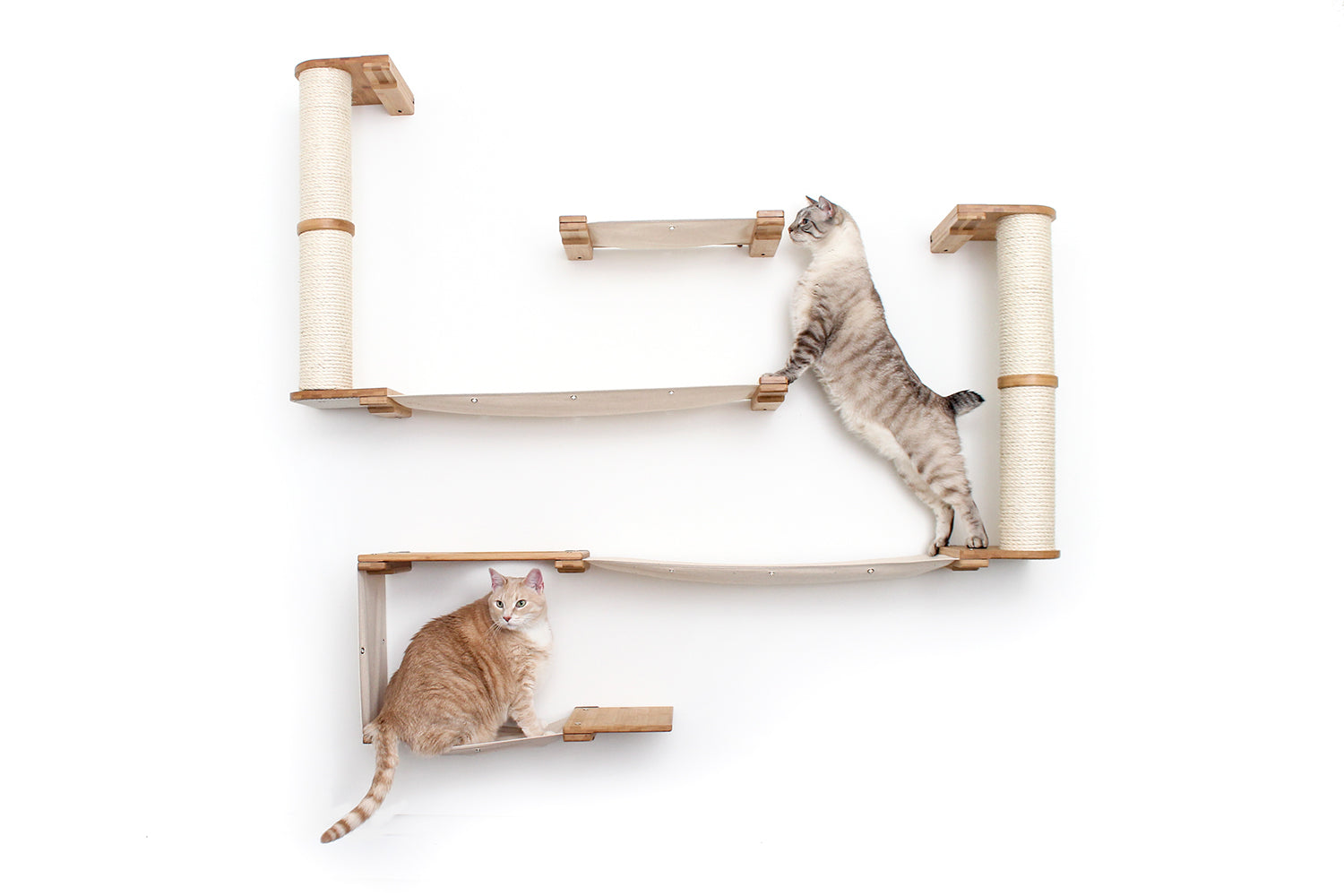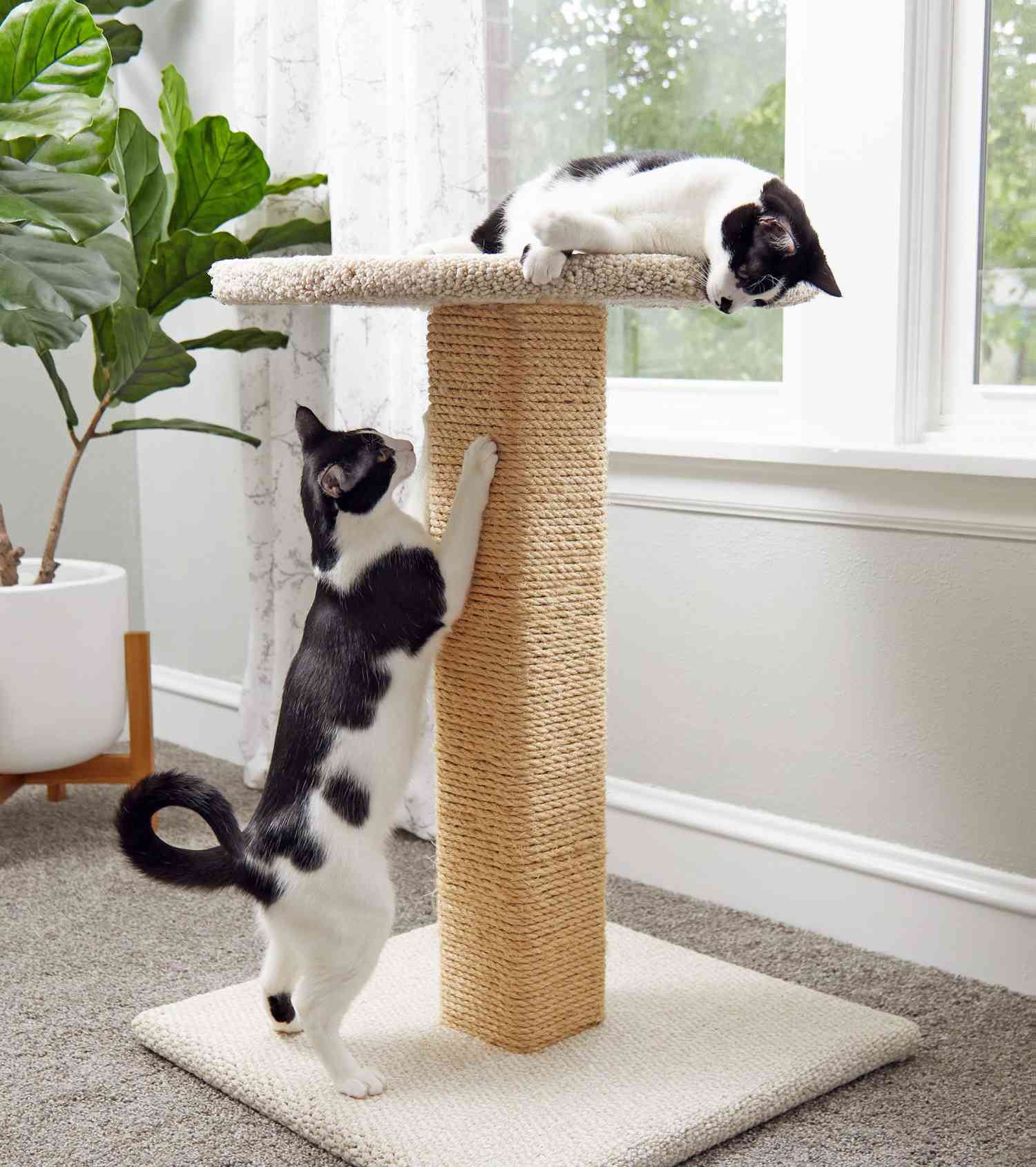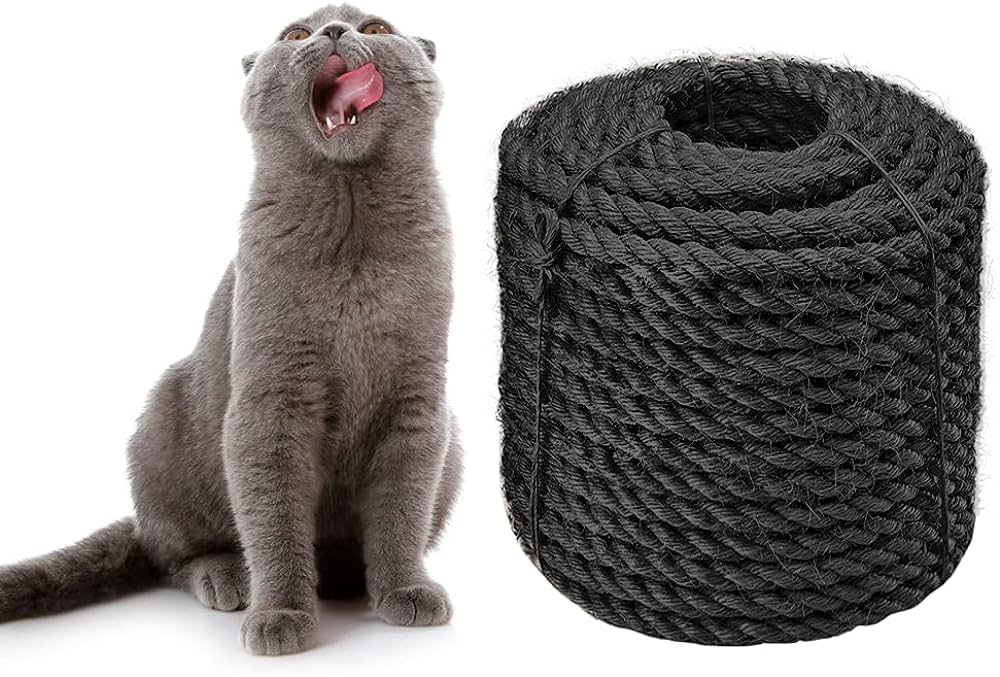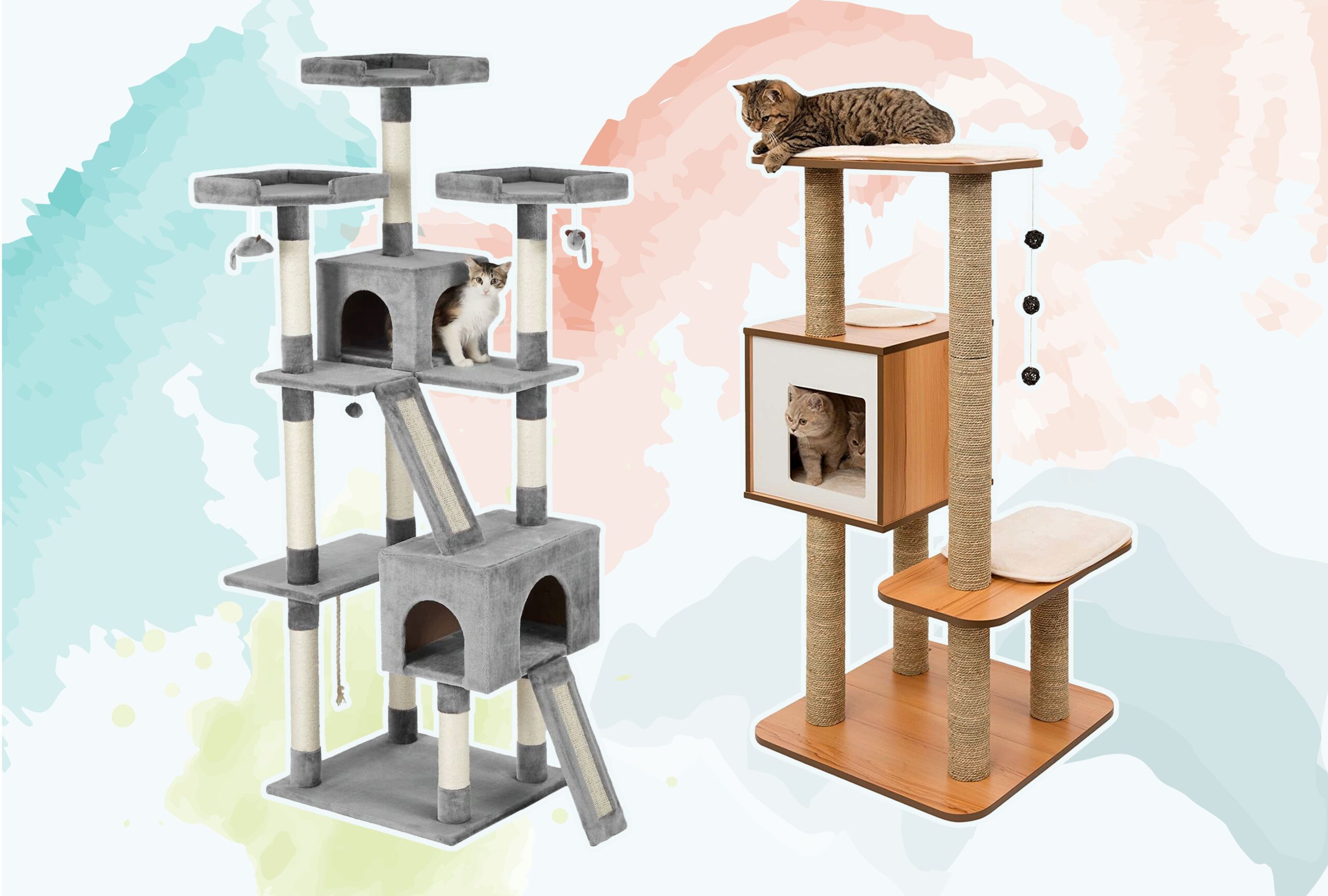To fix a cat tree, first identify broken or loose parts, then secure or replace them. Use strong adhesives, screws, or brackets for reinforcement.
Maintaining a sturdy and safe environment for your feline friend is crucial, and a well-maintained cat tree plays a vital role in their daily life. A damaged cat tree not only poses a risk to your pet’s safety but also diminishes their space for exercise and leisure.
Simple repairs can often do the trick, such as tightening screws or reattaching loose sections with wood glue. Ensuring the tree is anchored securely will prevent wobbling and potential accidents. For worn-out posts, wrapping them with new sisal rope can breathe new life into the cat tree. Regularly inspecting the structure for signs of wear and tear is the key to keeping the tree functional and your cat happy. Remember, a proactive approach to maintenance can extend the life of your cat’s favorite perch.
Assessing The Damage
Before repairing your cat tree, it’s essential to assess the damage thoroughly. Knowing what parts need fixing saves time and effort. Let’s dive deep into the process.
Identify Weak Spots
Inspect every inch of your cat tree for signs of wear and tear. Look out for loose nails or screws, fabric tears, and unstable platforms. Ensure to check hidden areas beneath the fabric coverings as these spots are often overlooked despite potentially having serious damage.
Materials Check
Gather all the necessary materials before proceeding. Here’s what you need:
- Replacement parts like posts or platforms
- Durable fabric or carpet scraps for covering
- Tools, including a hammer, staple gun, and screwdriver
- Screws, nails, and brackets for reinforcement
- Glue, preferably non-toxic in case your cat chews on it
Check off each item as you gather them to ensure nothing is forgotten.

Credit: www.homedepot.com
Gathering The Right Tools
Gathering the Right Tools is the first step to ensuring your cat tree repair is successful.
Your beloved feline friend’s playground needs TLC from time to time. Sisal rope fraying? Platforms wobbling? It’s repair time!
Essential Repair Kit
Start with a basic toolkit to tackle common repairs. Here’s what you’ll need:
- Screwdriver: For tightening or replacing screws.
- Hammer: Helps secure any loose nails or supports.
- Staple Gun: Ideal for attaching fabric or carpet.
- Sisal Rope: To refresh scratched posts.
- Carpet Knife: Cuts fabric and old rope with precision.
- Measuring Tape: For accurate material measurements.
Alternative Diy Solutions
Missing some tools? Try these DIY alternatives:
| Tool Needed | DIY Substitute |
|---|---|
| Screwdriver | Coin or Butter Knife |
| Hammer | Heavy Book or Shoe |
| Staple Gun | Manual Stapler or Strong Tape |
| Sisal Rope | Old Fabric Strips or Twine |
With the right tools at hand, you’re set to fix that cat tree! Your cat will thank you.
Stabilizing The Base
Stabilizing the Base is crucial for the longevity and safety of your cat’s favorite perch. Over time, the foundation of a cat tree can become wobbly. This can cause the entire structure to be unsteady. To keep your feline friend safe and secure, follow these steps to reinforce the base of the cat tree. Ensuring stability not only protects your cat but also your investment in their play equipment.
Reinforcement Techniques
Reinforcement techniques are vital to fixing a shaky cat tree base. Begin by assessing the base for any signs of wear and tear. Look for screws, nails, or other fasteners that may have come loose over time.
Here are ways to reinforce the base:
- Replace worn-out bottom pads with new, non-slip materials.
- Add additional support such as plywood to increase surface area and stability.
- Use angle brackets for extra hold at the corners where the base meets vertical elements.
- Tighten all screws and fasteners regularly to prevent loosening.
Securing Loose Parts
Check for loose parts that can make the cat tree unstable. Securing these pieces is essential to keep the structure safe.
Steps to secure loose parts:
- Identify any loose screws or bolts. Tighten them with the appropriate tools.
- If parts are missing, replace them with similar-sized hardware.
- Glue any wobbly sections that cannot be tightened.
- Wrap sisal rope around exposed sections to prevent further loosening.
By addressing these two areas, you give your cat back a stable and secure playground. Use short and direct sentences to make the steps easy to follow. Keep all tools and spare parts out of reach from pets and children while working on the cat tree. Remember, a safe cat is a happy cat!
Refreshing Scratching Posts
Your cat loves its tree, but those scratching posts see a lot of action. Over time, they can become frayed and worn. A great way to breathe new life into your cat’s favorite spot is to refresh the scratching posts. Let’s make that cat tree look and feel brand new again!
Removing Worn-out Rope
Start by inspecting the posts. Look for strings hanging loose. These can be a hazard. Carefully remove the old rope. Make sure you remove every bit!
| Tool | Use |
|---|---|
| Utility knife or scissors | To cut away old rope |
| Gloves | For hand protection |
Wrapping New Sisal
Choose a durable sisal rope. It should be thick enough to endure scratching. Cut a piece to fit around the post. You’ll need a bit extra just in case.
- Start at the bottom.
- Secure the end with a staple or glue.
- Wrap tightly. You don’t want any gaps.
- Finish off with another staple or more glue.
Trim any excess rope. Make sure there are no loose ends. Your cat can now enjoy a refreshed scratching post!
- Measure and cut rope.
- Glue or staple the starting end.
- Wrap the rope tightly.
- Secure the finishing end.
Reupholstering Platforms
Cat tree platforms suffer from wear and tear over time. But no need to worry! Reupholstering is a simple and rewarding DIY project. It can give your cat tree a fresh look and make it more comfortable for your feline friends. In this section, we delve into selecting the proper fabric and executing fabric replacement with ease.
Choosing The Right Fabric
Durability and comfort are key when picking a fabric for cat trees. Make sure to:
- Select a heavy-duty fabric that can withstand scratching.
- Opt for a material that is easy to clean and maintain.
- Choose a pattern or color that blends with your decor and hides fur.
Consider materials like faux suede, canvas, or corduroy for the best results.
Execution Of Fabric Replacement
Replacing the fabric on cat tree platforms involves a few key steps:
- Remove the old fabric, clean the surface underneath.
- Cut the new fabric to size, leaving extra inches for secure attachment.
- Wrap the fabric tightly around the platform, securing it with staples or adhesive.
- Trim any excess fabric and ensure corners are neat.
Tools needed include a staple gun, scissors, and fabric adhesive. Be sure to pull the fabric taut to prevent wrinkles or sagging.

Credit: www.amazon.com
Securing And Tightening
Your cat’s comfort and safety are imperative. A well-maintained cat tree is essential. Let’s dive into how to keep your cat tree sturdy and safe with effective securing and tightening strategies.
Inspecting And Tightening Joints
Begin with a thorough inspection of the cat tree. Look for loose screws or wobbly parts. This is crucial to prevent potential accidents.
- Check every screw: Ensure they’re all tight.
- Use a screwdriver: Tighten any loose screws.
- Allen wrenches might be needed: Check the type of screws your cat tree uses.
| Tool | Use Case |
|---|---|
| Screwdriver | For standard screws |
| Allen Wrench | For hexagonal bolts |
If parts are non-tightenable, consider replacements for safety.
Long-term Maintenance Tips
Maintaining a cat tree isn’t just a one-time task. Here’s how to keep it robust for years.
- Regularly inspect the joints for stability.
- Clean fabric areas to prevent wear and tear.
- Replace parts when necessary.
- Use wood glue for extra strength.
Done right, these steps will provide a secure playground for your feline friend.
Final Touches And Safety Check
Final Touches and Safety Check play a crucial role in ensuring your feline friend enjoys their refurbished cat tree without any hiccups. It’s time to infuse the structure with elements of fun and confirm its security. A cat’s health and joy hinge on these final steps before they leap onto their rejuvenated playground.
Adding Cat-friendly Features
Elevate the excitement of your cat’s experience with features tailored to their delight.
- Hang durable toys for batting and swatting from the upper levels.
- Attach a secure hammock for restful naps in the sun.
- Install scented scratching posts with catnip or silver vine to entice their senses.
- Soft, machine-washable bedding provides cozy spots to lounge.
Conducting A Safety Inspection
A thorough safety check prevents accidents, giving both you and your cat peace of mind.
- Examine all joints and fixings for stability and tighten any that are loose.
- Check each level to ensure no sharp edges or splinters could harm your cat.
- Scan for small, detachable pieces that could pose a choking hazard.
- Ensure the structure is balanced and doesn’t tip or wobble when pushed gently.

Credit: www.catastrophicreations.com
Frequently Asked Questions For How To Fix Cat Tree
Why Do Cat Trees Become Unstable?
Cat trees may become unstable due to wear and tear, loose screws, or uneven weight distribution. Regular tightening of fasteners can maintain stability.
Can You Re-carpet A Cat Tree?
Yes, re-carpeting a cat tree is possible. Choose a durable carpet and staple or glue it securely onto the tree’s surface to give it a fresh look.
What Materials Work Best For Repairing Cat Trees?
For repairing cat trees, sisal rope for scratching posts and heavy-duty carpet or fabric for lounging areas are ideal. Ensure materials are pet-safe and sturdy.
How To Replace A Worn-out Scratching Post?
To replace a worn scratching post, remove the old rope, apply adhesive, and tightly wrap new sisal rope around the post. Trim any excess material.
Conclusion
Repairing your cat tree can be a rewarding DIY task. Your feline friend deserves a safe, sturdy play area. With the right tools and a bit of patience, you’ve learned that even the shabbiest cat tree can be restored to its former glory.
Keep these tips in mind for a happy, active kitty and a lasting cat tree.



